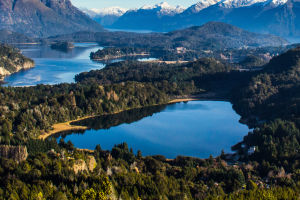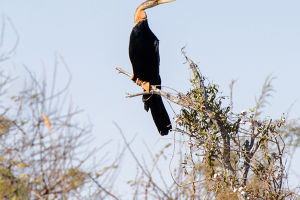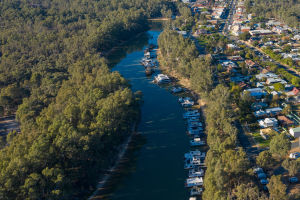Discovering Kenya’s wild landscapes offers an unforgettable escape into vast open spaces where wildlife roams freely.
For Lykkers eager to explore breathtaking scenery and encounter diverse animal species in their natural environments, Kenya provides an exceptional experience to recharge away from the bustle of everyday life.
This guide reveals Kenya's most spectacular protected areas, where golden savannas meet emerald forests, along with practical tips for an unforgettable wilderness adventure.
Tsavo National Park: The Vast Wilderness
Overview
Tsavo National Park is Kenya’s largest protected area, stretching across the southeastern region near the border with Tanzania. It covers roughly one-third of the country’s protected land, making it an ideal destination for those seeking wide-ranging landscapes and abundant wildlife.
Landscape and Wildlife
The park is divided into two sections by the main road between Nairobi and Mombasa and the Tsavo River: Tsavo East and Tsavo West.
Tsavo East features expansive savanna plains with distinctive red earth, dotted with acacia trees and baobabs. In contrast, Tsavo West presents a more varied terrain, including volcanic hills, lush forests, and springs surrounded by palm oases. Notable landmarks include the volcanic Mount Nzaui, rising to 2,170 meters, and the famous "green hills of Africa," offering striking panoramic views.
Visitors can expect sightings of a wide variety of mammals including elephants, giraffes, zebras, and many predators. The park is renowned for its photo safari opportunities and is a haven for wildlife enthusiasts.
- Opening Hours: Daily, from 6:00 AM to 7:00 PM
- Entrance Fee: Approximately $50 for international visitors; children and residents enjoy discounted rates
- Parking: Available at the main gates with ample space for vehicles
- Location: Approximately 200 km southeast of Nairobi; accessible by road from Nairobi or Mombasa
South Kitui and Boni Nature Reserves: Rich Wildlife Sanctuaries
South Kitui Reserve
Spanning 1,833 square kilometers, South Kitui is renowned for its thriving populations of primates. Several species of monkeys and apes coexist here alongside large mammals such as lions, leopards, elephants, hippopotamuses, and giraffes.
The reserve’s vast ecosystems provide a unique opportunity to witness authentic African wilderness in a relatively untouched setting.
Boni Reserve
Covering 1,339 square kilometers, Boni Reserve acts as a sanctuary for elephant herds, especially during dry seasons when water sources become scarce elsewhere. Though the elephant population has decreased over time, the reserve remains crucial for their protection. Visitors also encounter diverse birdlife and rare plants within this rich forest environment.
- Opening Hours: Daily from 7:00 AM to 6:00 PM
- Entrance Fee: Around $30 for foreign guests; locals may receive discounts
- Parking: Designated areas near visitor centers
- Locations: South Kitui is located about 200 km northeast of Nairobi; Boni Reserve lies in the coastal region at the southeastern end of Kenya’s northern border with Somalia.
Kakamega Forest Reserve: Tropical Biodiversity Hub
Unique Ecosystem
Kakamega Forest Reserve is the only tropical rainforest of its kind in the country, located in the western region. It spans approximately 240 square kilometers and is a vital refuge for rare plant and animal species.
The forest’s dense canopy shelters hundreds of bird species, diverse insects, and several rare primates.
Vegetation Highlights
The reserve’s flora includes a variety of hardwood trees, orchids, and numerous endemic plants. The forest’s plant life creates a rich ecosystem supporting complex food chains and ecological interactions, making it a popular destination for botanists and nature lovers.
- Opening Hours: Daily, 8:00 AM to 5:00 PM
- Entrance Fee: Roughly $20 per person; students and local visitors can benefit from reduced rates
- Parking: Available near the main entrance
- Location: Approximately 360 km northwest of Nairobi; accessible by road via Kisumu or Eldoret
Additional Practical Tips for Visiting Kenya’s Parks
Accommodation Options
For those planning a multi-day visit, nearby lodges and campsites offer comfortable stays ranging from luxury to budget-friendly.
- Budget ($5–$50): Public campsites & basic guesthouses (self-catering).
- Mid-Range ($30–$250): Tented camps & lodges (meals often included).
- Luxury ($100–$800+): High-end safari lodges (all-inclusive).
Many safari operators provide packages including guided tours, transfers, and meals, simplifying travel logistics.
Travel Tips
- Best visiting periods are during dry seasons when wildlife is more concentrated around waterholes.
- Bring lightweight clothing, sunscreen, insect repellent, and binoculars.
- Guided tours increase chances of wildlife sightings and enrich the overall experience.
In Conclusion
Kenya’s parks and reserves offer an inspiring blend of natural beauty, rich wildlife, and unique ecosystems that captivate visitors. From the vast open spaces of Tsavo to the lush greenery of Kakamega Forest, each destination provides a distinct experience worth exploring.
With well-organized facilities and a variety of options for stays and tours, these natural sanctuaries promise an adventure that reconnects with the rhythms of the wild. For Lykkers seeking a genuine encounter with nature, Kenya stands as a premier destination filled with awe-inspiring moments and lasting memories.


